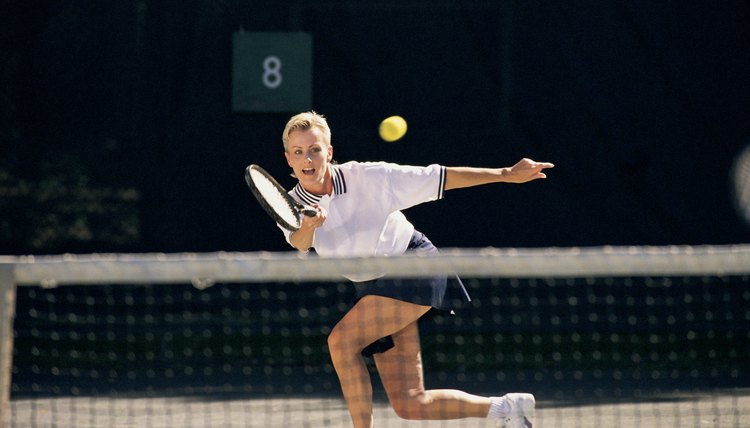Tennis & Toe Pain

The fast-paced, back-and-forth motions associated with tennis can place strain on your joints, including your knees, ankles and even your toes. You use your toes, especially your big toe, to push off and change directions. This can lead to toe fractures or other conditions like “tennis toe” and "turf toe." If you suspect you may have experienced a toe injury playing tennis, seek a physician’s evaluation.
Tennis Toe
Tennis toe is a condition that results from the fast changes of direction that take place in tennis. This action causes your toe to push against the toe box of your shoe, which can injure the area underneath your toenail. Over time, this pressure can build and cause your toe to throb with pain. You can prevent this condition by keeping your toenails cut short and wearing comfortable athletic shoes. However, if you experience this injury, your physician can create a small hole in your toenail that will relieve pressure in the toe.
Stress Sprains/Fractures
Stress fractures are tiny cracks in the bones of your toes and feet that can occur from overuse and injury while playing tennis. You can incur an injury after a trip or fall, or running into the net, that can worsen with each ensuing tennis session if you do not take time to rest. Some of the signs you may have experienced this type of injury include swelling, bruising and limited range of motion in your toe. If you experience this injury type, resting and icing your toe can aid in healing. See your physician to ensure you have not experienced a more serious toe injury.
Turf Toe
If you frequently play on asphalt courts, you may be increasing your risk for an injury known as turf toe. Also common in football players, this injury can occur if the toe is bent too far up or down. Repeated motions, such as starting and stopping, can further worsen your symptoms. This can weaken your ligaments and joint capsules that protect your toe and help it to move. Like sprains and strains, turf toe can be treated with rest, ice and taking an anti-inflammatory medication to reduce swelling. However, your physician also may recommend special taping methods to prevent future injury.
Prevention
Because toe injuries can be common in tennis players, engaging in preventive techniques can help you avoid pain that keeps you off the court. This includes stretching your legs, calves and toes before playing. You also may wish to avoid certain tennis court materials known to be hard on your toes, such as asphalt, concrete or carpet. Clay and crushed-stone courts are more conducive to sliding, helping to prevent tennis injuries. Buy properly-fitted tennis shoes; the best you can afford.
References
Writer Bio
Rachel Nall began writing in 2003. She is a former managing editor for custom health publications, including physician journals. She has written for The Associated Press and "Jezebel," "Charleston," "Chatter" and "Reach" magazines. Nall is currently pursuing her Bachelor of Science in Nursing at the University of Tennessee.
